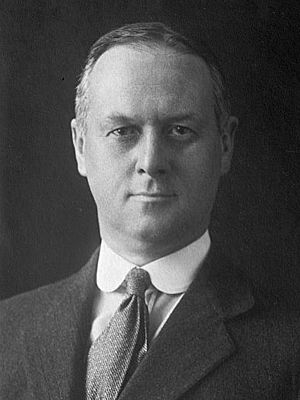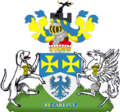Thomas Inskip, 1st Viscount Caldecote facts for kids
Quick facts for kids
The Viscount Caldecote
|
|||||||||||||||||||||||||||||||||||||||||||||||||||||||||||||||||||||||||||||||||||||||
|---|---|---|---|---|---|---|---|---|---|---|---|---|---|---|---|---|---|---|---|---|---|---|---|---|---|---|---|---|---|---|---|---|---|---|---|---|---|---|---|---|---|---|---|---|---|---|---|---|---|---|---|---|---|---|---|---|---|---|---|---|---|---|---|---|---|---|---|---|---|---|---|---|---|---|---|---|---|---|---|---|---|---|---|---|---|---|---|
 |
|||||||||||||||||||||||||||||||||||||||||||||||||||||||||||||||||||||||||||||||||||||||
| Lord Chief Justice of England | |||||||||||||||||||||||||||||||||||||||||||||||||||||||||||||||||||||||||||||||||||||||
| In office 14 October 1940 – 23 January 1946 |
|||||||||||||||||||||||||||||||||||||||||||||||||||||||||||||||||||||||||||||||||||||||
| Monarch | George VI | ||||||||||||||||||||||||||||||||||||||||||||||||||||||||||||||||||||||||||||||||||||||
| Preceded by | The Viscount Hewart | ||||||||||||||||||||||||||||||||||||||||||||||||||||||||||||||||||||||||||||||||||||||
| Succeeded by | The Lord Goddard | ||||||||||||||||||||||||||||||||||||||||||||||||||||||||||||||||||||||||||||||||||||||
| Leader of the House of Lords | |||||||||||||||||||||||||||||||||||||||||||||||||||||||||||||||||||||||||||||||||||||||
| In office 14 May 1940 – 3 October 1940 |
|||||||||||||||||||||||||||||||||||||||||||||||||||||||||||||||||||||||||||||||||||||||
| Prime Minister | Winston Churchill | ||||||||||||||||||||||||||||||||||||||||||||||||||||||||||||||||||||||||||||||||||||||
| Preceded by | The Earl Stanhope | ||||||||||||||||||||||||||||||||||||||||||||||||||||||||||||||||||||||||||||||||||||||
| Succeeded by | The Viscount Halifax | ||||||||||||||||||||||||||||||||||||||||||||||||||||||||||||||||||||||||||||||||||||||
|
|||||||||||||||||||||||||||||||||||||||||||||||||||||||||||||||||||||||||||||||||||||||
| Member of the House of Lords Lord Temporal |
|||||||||||||||||||||||||||||||||||||||||||||||||||||||||||||||||||||||||||||||||||||||
| In office 7 September 1939 – 11 October 1947 Hereditary Peerage |
|||||||||||||||||||||||||||||||||||||||||||||||||||||||||||||||||||||||||||||||||||||||
| Preceded by | Peerage created | ||||||||||||||||||||||||||||||||||||||||||||||||||||||||||||||||||||||||||||||||||||||
| Succeeded by | The 2nd Viscount Caldecote | ||||||||||||||||||||||||||||||||||||||||||||||||||||||||||||||||||||||||||||||||||||||
| Member of Parliament for Fareham |
|||||||||||||||||||||||||||||||||||||||||||||||||||||||||||||||||||||||||||||||||||||||
| In office 20 February 1931 – 6 September 1939 |
|||||||||||||||||||||||||||||||||||||||||||||||||||||||||||||||||||||||||||||||||||||||
| Preceded by | John Davidson | ||||||||||||||||||||||||||||||||||||||||||||||||||||||||||||||||||||||||||||||||||||||
| Succeeded by | Dymoke White | ||||||||||||||||||||||||||||||||||||||||||||||||||||||||||||||||||||||||||||||||||||||
| Member of Parliament for Bristol Central |
|||||||||||||||||||||||||||||||||||||||||||||||||||||||||||||||||||||||||||||||||||||||
| In office 14 December 1918 – 30 May 1929 |
|||||||||||||||||||||||||||||||||||||||||||||||||||||||||||||||||||||||||||||||||||||||
| Preceded by | constituency established | ||||||||||||||||||||||||||||||||||||||||||||||||||||||||||||||||||||||||||||||||||||||
| Succeeded by | Joseph Alpass | ||||||||||||||||||||||||||||||||||||||||||||||||||||||||||||||||||||||||||||||||||||||
| Personal details | |||||||||||||||||||||||||||||||||||||||||||||||||||||||||||||||||||||||||||||||||||||||
| Born |
Thomas Walker Hobart Inskip
5 March 1876 Clifton, Bristol United Kingdom |
||||||||||||||||||||||||||||||||||||||||||||||||||||||||||||||||||||||||||||||||||||||
| Died | 11 October 1947 (aged 71) Godalming, Surrey United Kingdom |
||||||||||||||||||||||||||||||||||||||||||||||||||||||||||||||||||||||||||||||||||||||
| Political party | Conservative | ||||||||||||||||||||||||||||||||||||||||||||||||||||||||||||||||||||||||||||||||||||||
| Spouse | Lady Augusta Boyle | ||||||||||||||||||||||||||||||||||||||||||||||||||||||||||||||||||||||||||||||||||||||
| Alma mater | King's College, Cambridge | ||||||||||||||||||||||||||||||||||||||||||||||||||||||||||||||||||||||||||||||||||||||
Thomas Walker Hobart Inskip, 1st Viscount Caldecote (born March 5, 1876 – died October 11, 1947) was an important British politician. He held many legal jobs, becoming the Lord Chancellor from 1939 to 1940. Even though he spent most of his career in law, he is best known for being the first Minister for Coordination of Defence from 1936 to 1939.
Contents
Early Life and Education
Thomas Inskip was born in Clifton, Bristol, England. His father, James Inskip, was a lawyer. Thomas went to Clifton College from 1886 to 1894. After that, he studied at King's College, Cambridge, from 1894 to 1897.
In 1899, he officially became a lawyer, which is called being "called to the Bar". He joined a rugby club called Clifton RFC in 1895.
A Career in Law and Politics
Thomas Inskip became a senior lawyer, known as a King's Counsel, in 1914. During World War I, he worked in the Intelligence Division. From 1918 to 1919, he was in charge of the Naval Law branch at the British Admiralty, which manages the Royal Navy.
In 1918, he became a Member of Parliament (MP) for Bristol Central. This meant he was elected to represent the people of Bristol in the British Parliament. He was first appointed Solicitor General in 1922. This is a top legal advisor to the government. He held this job for six years, with a short break when another political party was in power. In 1922, he was also made a Knight Bachelor, which means he was given the title "Sir".
In 1928, Inskip was promoted to Attorney General, another very important legal role for the government. He held this position until the election in 1929, when he lost his seat in Parliament. However, he was re-elected for Fareham in 1931. He then returned to being Solicitor General and later, Attorney General again. In 1932, he became a member of the Privy Council, a group of advisors to the King.
In 1935, he was involved in a famous court case. He prosecuted a nobleman, the 26th Baron de Clifford, in the House of Lords. This was the very last time a British nobleman was tried for a crime in the House of Lords.
Leading Britain's Defence Efforts
On March 13, 1936, Thomas Inskip took on a new and very important role. He became the first Minister for Coordination of Defence. This job was created to help Britain get ready for a possible war. Many people expected Winston Churchill to get this job. Churchill had been pushing for such a role.
Inskip's appointment was quite surprising and even controversial. People joked that he was chosen because he wasn't well-known and didn't know much about military matters. Some even compared it to a Roman emperor making his horse a consul! However, Prime Minister Stanley Baldwin likely chose Inskip to show that Britain was not trying to provoke other countries by appointing someone like Churchill, who was seen as more aggressive.
Inskip's time as Minister for Coordination of Defence is still debated today. Some historians say he helped Britain prepare its military before World War II. Others argue that his department didn't have much power or staff, so he couldn't do a lot. In early 1939, he was replaced and became the Secretary of State for Dominion Affairs. This role involved managing relations with countries like Canada and Australia.
When World War II began in 1939, Inskip was given the title of Viscount Caldecote. He also became the Lord Chancellor, the highest legal officer in England. However, in May 1940, he returned to his role as Secretary of State for Dominion Affairs. After leaving government, he served as Lord Chief Justice of England from 1940 to 1946. This made him the top judge in England. He was the last Lord Chief Justice to have held a government job before becoming a judge.
In 1940, a book called Guilty Men criticized several public figures, including Inskip. The book argued that they had failed to prepare Britain for war and had tried to avoid conflict with Nazi Germany for too long.
Family Life
Lord Caldecote married Lady Augusta Helen Elizabeth in 1914. She was the daughter of the 7th Earl of Glasgow. Thomas Inskip passed away in October 1947 at the age of 71. His son, Robert Andrew, inherited his title and became the 2nd Viscount Caldecote. Lady Caldecote lived until May 1967, passing away at 90 years old.
Images for kids


